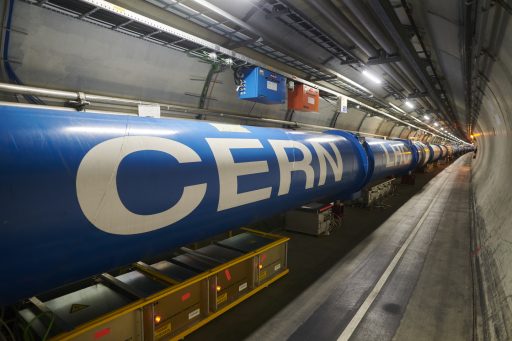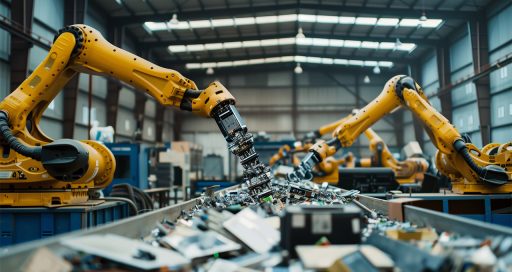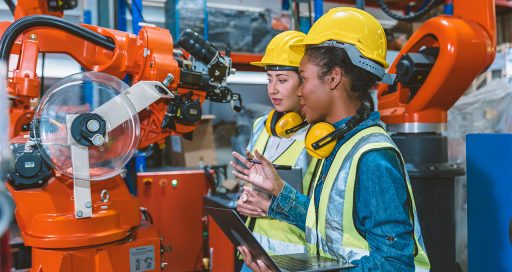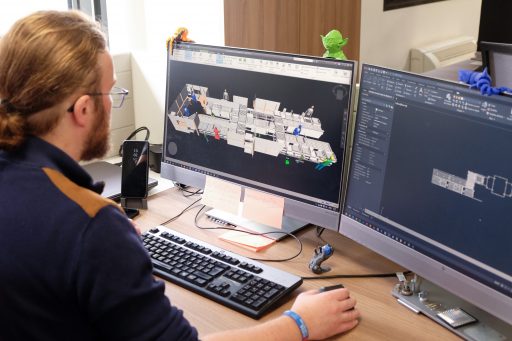For 40 years, the VINCI Energies brand specialising in industrial processes has been helping CERN develop the world’s largest particle accelerator.

© 2021 CERN Hertzog, Samuel Joseph: CERN
A ring 27 km in circumference, buried 100 metres underground and straddling the Franco-Swiss border, the Large Hadron Collider (LHC) is the largest and most powerful particle accelerator in the world. This gigantic scientific instrument was designed, built and in September 2008, commissioned by the European Organization for Nuclear Research (CERN), which is jointly run by 23 member states. The LHC’s mission is to shed light on the creation of the universe.
In July 2012, CERN announced the discovery of a new particle with characteristics matching those of the Higgs boson. This discovery of a missing link in the standard model of subatomic physics marked a turning point in scientific history and a year later, earned Peter Higgs the Nobel Prize in Physics.
But many pivotal questions remain unanswered. How did the universe assume its current form, and what will be its ultimate fate? In short, the LHC is not done probing the mysteries of the universe’s origin.
“One of the major technical challenges we face is integrating with CERN’s ultra-secure processes”
And every part of this exploration is supersized. Inside the LHC, which operates 24/7 throughout eight months of the year, two beams of protons or ions travel for around eight hours at 11,245 revolutions per second (close to the speed of light) before they are made to collide – a billion collisions per second.
The keys to this powerful acceleration are the superconducting magnets placed all around the ring. To generate their magnetic field, they are powered by a 12,000 A current and helium-cooled to minus 271.3 °C, colder than outer space. The LHC contains a total of more than 9,500 magnets, including 1,232 dipole and 392 quadrupole magnets, some of which are 15 metres long and weigh 35 tonnes.
Increasingly powerful magnets
How does it all work? “CERN designs all its own components and equipment,” says Jean-Philippe Tock, CERN’s Head of Accelerator Coordination & Engineering. “For large-scale production and to operate our installations, we need support from a host of technicians and engineers in an extremely diverse range of occupations. There are currently almost 2,000 contractors working on site every day.”
One of the business units involved is Actemium, the VINCI Energies brand specialising in industrial processes, which supports this international organisation across a broad range of disciplines: design office, 3D integration of equipment in the tunnel, access systems, electronic board manufacture and fire detection. As Yann Patin, Business Unit Manager at Actemium Pays de Gex, explains, “Our partnership with CERN is focused on the assembly of superconductor components, maintenance of the installation, and now the development of new magnets.”
Since 2022, the LHC has been operating at virtually double the power compared with its first period of operation, able to produce collisions at 13.6 TeV (teraelectronvolts). In the future, new, more powerful, quadrupole superconducting magnets should make it possible to produce at least 140 collisions each time two particle beams come together (compared with the current 40 collisions).
To achieve this result, the beam will need to be more intense and more focused than what the LHC can currently generate. New equipment will have to be installed around approximately 1.2 km of the ring during the LHC’s third extended break (2026–2028), including new magnets made with an innovative component based on niobium-tin and being used for the first time in an accelerator.
80 Actemium personnel on site
“The uniqueness of what CERN does, the ultra-strategic dimension of its research, the extremely high-tech nature of its installations and the ultra-specific configuration of its working environments necessarily influence the services we provide,” says Yann Patin. “One of the major technical challenges we face is integrating with the site’s ultra-secure processes.”
The 80 Actemium Pays de Gex and Actemium Geneva employees operating on site also have to demonstrate great logistical agility. The LHC has only eight entry points with lift access to the ring, inside which technicians mostly get around by bike.
“The absolute confidence we demand from our suppliers and providers begins with strict selection criteria in our initial market research,” says Jean‑Philippe Tock. “We then rigorously monitor the contracts, which generally run for up to seven years for service provision. Because of the cutting-edge technological development involved, some contracts are more akin to partnerships.” The partnership between CERN and Actemium is testament to this confidence, having flourished for 40 years.
Next-generation accelerator
In 2026, the LHC (Large Hadron Collider) will enter a long period of maintenance and improvement work with the aim of allowing it to operate into approximately the mid-2040s. And what then? CERN is working on the next generation of accelerators, including the FCC (Future Circular Collider), a sort of super-microscope for studying the Big Bang expected to enter construction in 2035 and take more than 10 years to complete. It will be a colossal undertaking, consisting this time of a 91 km tunnel 200 to 300 metres underground beneath Lake Geneva and the Rhône, between Geneva and Annecy.
11/16/2023





